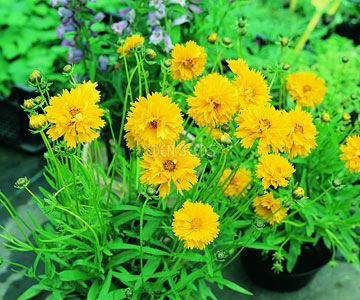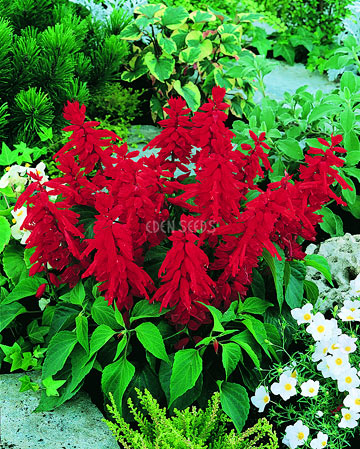Articles
Perennials
Perennials: The Lasting Gems of the Garden

Perennials are the garden’s workhorses – they return year after year, bringing beauty, consistency, and value to every space. Unlike annuals, which need replanting each season, perennials establish themselves over time, enhancing soil, attracting pollinators, and offering ongoing harvests. Here’s a guide to some standout perennials that will bring life, flavour, and colour to your garden for years to come.
Artichoke
Artichoke adds striking texture to the garden with its impressive foliage and edible flower buds, while also offering medicinal benefits, commonly used to support liver health and aid digestion. If you don't eat the flowers while they're still tight buds, and leave them to enter their full purple majesty, they are a sight to behold.
Asparagus
One of the few perennial vegetables, asparagus rewards patience. It takes a couple of years to establish, but the payoff is tender, flavourful spears each spring. Asparagus loves full sun and thrives in well-draining, slightly acidic soil. It also pairs well with companion plants like tomatoes and basil, which help deter pests.
Comfrey
Comfrey is a versatile garden ally, loved by herbalists and permaculture enthusiasts. Its deep roots mine nutrients from the soil, making it an excellent addition for garden beds as green manure or mulch. A nutrient rich compost tea can be made by soaking its leaves in water, and has traditional medicinal uses as a compress for bruises, sprains and breaks among other remedies. Comfrey grows well in partial to full sun and moist, fertile soil.

Coreopsis
Coreopsis, also known as tickseed, is a tough, cheerful flower that blooms in bright yellow or red hues, adding vibrancy to any garden. It’s low-maintenance, drought-resistant, and ideal for sunny spots. Pollinators love it, making it a wonderful companion plant.
Dahlia
Dahlias offer breathtaking blooms in an array of colours, from pastel pinks to vibrant reds. While technically a tuber that needs to be lifted in colder climates, it can survive in-ground in milder zones. Dahlias love sunny spots and soil rich in organic matter. Dahlia is also an edible plant!
Echinacea

Also known as coneflower, echinacea is both a medicinal powerhouse and ornamental favourite. Its daisy-like flowers attract bees and butterflies, while its roots have immune-boosting properties. Plant echinacea in full sun and well-draining soil, and it will reward you with beauty and usefulness year after year.
Goji Berry
Goji berries are packed with antioxidants and thrive as a low-maintenance shrub in a sunny spot with well-drained soil. Though not a quick-yielding plant, this drought-tolerant perennial offers small, tangy berries rich in nutrients, making it a worthy addition to the garden.
Holy Basil
Also known as Tulsi, holy basil is revered for its medicinal properties. This herb prefers sunny conditions and slightly moist soil. It has a graceful, bushy growth habit with aromatic leaves and delicate purple flowers, creating a lush, lively presence that enhances aesthetic appeal in your garden. Holy basil’s leaves can be harvested for tea, adding a wellness boost to your garden’s bounty.

Lavender
This fragrant herb is a perennial classic with its silvery foliage and purple blooms. Lavender thrives in hot, dry conditions and well-draining soil, making it ideal for low-water gardens. It’s a natural pest repellent, attracts pollinators, and can be harvested for culinary or medicinal uses.
Passionfruit
Not only a delicious fruit, but also a climbing perennial that adds lush greenery to your garden. Passionfruit loves warm, sunny conditions and fertile, well-draining soil. With proper care, this climber can produce a prolific crop of juicy, tangy fruits – perfect for refreshing summer treats. Will happily adorn an arch, trellis or other vertical climbing surface and offers an abundance of eye catching flowers before the delicious fruit.
Rosemary
Along with many other aromatic herbs like Mint, Thyme, and Sage, Rosemary stands out with its hardy, evergreen nature and versatile uses—not only enhancing culinary dishes and garden aesthetics but also offering medicinal benefits, known to boost memory, improve circulation, and relieve stress when used in teas, tinctures, and aromatherapy.

Salvia
A pollinator magnet, salvia’s vibrant flowers are a garden staple. Salvia is hardy, easy to care for, and offers visual interest throughout the growing season. It thrives in well-draining soil and full sun, adding a touch of resilience and beauty to beds, fencelines and garden borders. There are multitude of colourful salvia varieties to choose from including blue, purple, white, pink, salmon, burgundy and red.
Strawberry
A sweet perennial favourite! Strawberries spread quickly, covering the ground with glossy leaves, white flowers, and, of course, delicious red fruit. They grow best in well-draining soil with plenty of organic matter and a sunny spot. Be prepared to protect your crop from eager birds and slugs.
Wormwood
Wormwood is an aromatic herb known for its feathery silver leaves and natural pest-repelling qualities. It thrives in poor soil and dry conditions, making it a hardy choice for borders and forgotten corners. Avoid planting near edibles as its strong scent can interfere with other plants.

Yarrow
Yarrow is a hardy, drought-tolerant perennial with clusters of small, white or colourful flowers. It’s great for poor soil and provides medicinal benefits for herbalists. Yarrow’s high pollen production makes it a valuable resource for pollinators and beneficial insects and goes great in bouquets of cut flowers.
Why Plant Perennials?
Perennials provide structure, continuity, and character to your garden, making them valuable for any gardener seeking a low-maintenance, eco-friendly setup. With proper planning, these plants will create a sustainable ecosystem, offering yields, beauty, and biodiversity benefits that can transform any garden into a thriving, lively space. There are many many more marvellous perennial plants not mentioned here, a quick tip is typing "perennial" into our search bar and they will pop up. Also good to mention that some plants act as perennials in one climate while dying off in the cold of deep winter or heat of high summer in other climates. It's always good to experiment with your own growing conditions and see what happens - one of the myriad joys of gardening - it's full of interesting observations and lessons in science. At the end of the day, just go out there, get dirty, and have some fun. See you in the garden!



